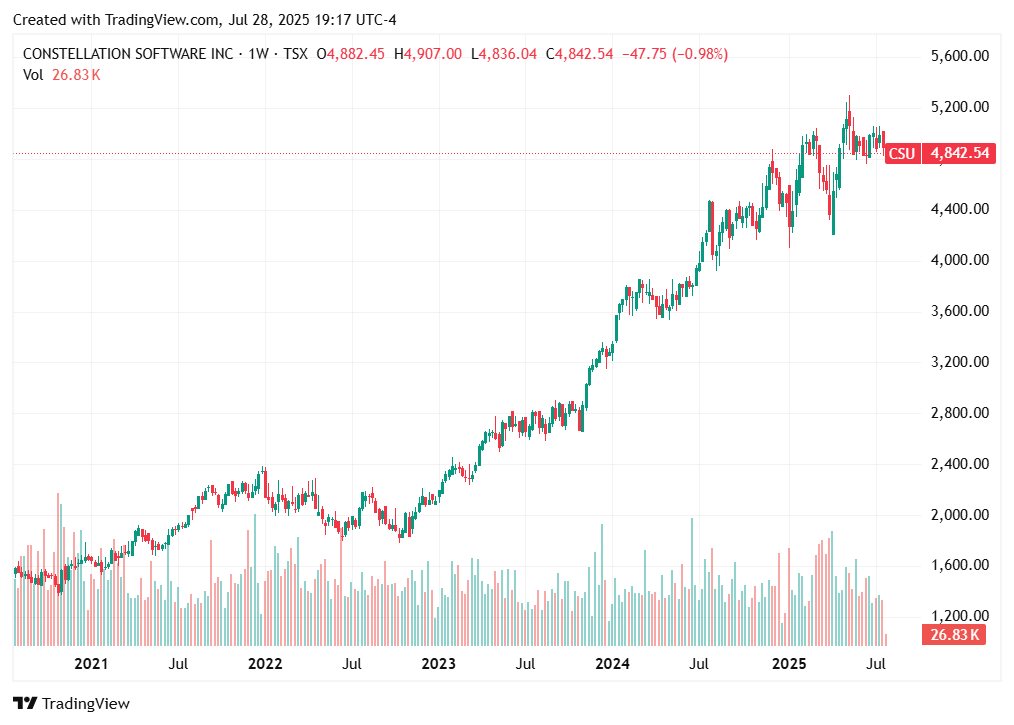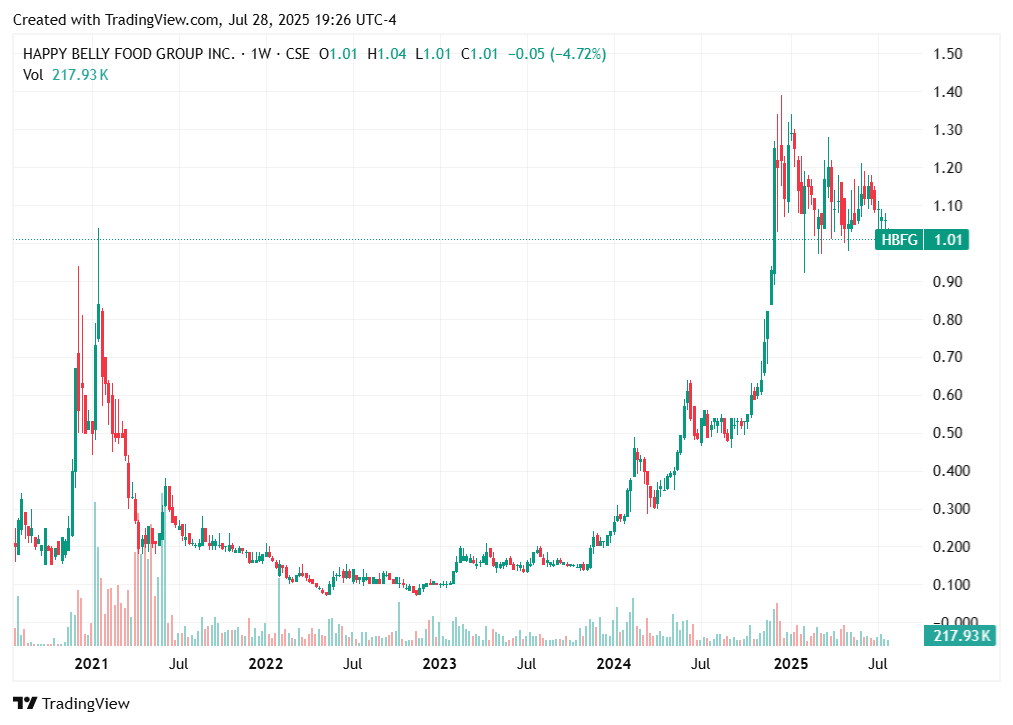10-Bagger Recipes
Hint: It's Math, Not Magic
The Allure
There is a tremendous siren song playing loudly during bull markets. An anthem of the successful investor: the “100 bagger”.
It is actually quite useful to think in terms of long term high rates of compounding and the difference it can make over time, the quest for 10, 20, 50, even 100 or more multiples of the initial investment. I actually think there’s a lot to be learned by studying 100-baggers and even recommend strongly people read Chris Mayer’s book of the same title.
The problem becomes when people either romanticize the story or they actually try directly “hunting” for such businesses. This will inevitably turn your brain into an irrational space, either taking on too much risk in an effort to find secret shortcuts to bypass the time component or making venture type bets akin to taking a bachelor party trip to a Vegas casino (and not a good one).
The Reality
Instead of even thinking about 100 baggers, its much more effectively to think in terms of 5X or 10X. The reason is not that the math works any differently. But it can ground you a timeframe and returns that are well within reasonable efforts to look for. And your hit rate can be orders or magnitude higher. String together a few of these in your investing career and the results of a 100-bagger look like child’s play.
Let’s dissect the math. There’s two key variables to get to a 10X. They are essentially the same types of things you would study in 100-baggers: time and return.
A 10× happens in this amount of time for the given annual return. I chose these cases to show you the bounds of what is possible.
15% per year → ~16.5 years
20% per year → ~12.6 years
30% per year → ~8.8 years
Less than 15% is still is a good portfolio return. But hopefully it isn’t your best performer in your portfolio. Somewhere around 20%, there have been numerous relatively well known stocks that have been able to do this over long time frames (10+ years). Closer to 30% per year is pushing what is realistic for even the best businesses with rare exceptions. Faster rates than this are typically short lived.
The annual return can be thought of as total shareholder return (TSR). The components include growth (cash flow - so some combination of revenue and/or margin expansion), shareholder yield (buyback + dividend yield), multiple re-rating. The key is to consider the per-share metrics here. Cash flow is great but its no good if stock is given away like candy and your ownership over the cash flow disappears.
Let’s look at three hypothetical paths:
A) The “pure compounder” route (patient, low drama)
Assume: 11% per‑share growth (steady reinvestment, modest margin tailwind)
Plus: 2% net buyback yield
Plus: 2% dividend yield
Multiple: flat (no re‑rating)
TSR ≈ 15% → ~16.5 years to 10×
This is the “own a great business for a long time” path. Entry price must be sensible because you’re not counting on multiple expansion. Great capital allocators at the helm of the management for these types of businesses can squeeze out a lot of juice from an otherwise decent but not amazing business. If you can find these, you should be happy to own them for long periods. The key here is the long period, as the growth is not blowing your returns out of the water in the short term. Short term swings in market re-ratings will do more in terms of return than the business performance and capital allocation.
B) “Execution + some re‑rating”
Assume: 12% per‑share growth
Plus: 3% net buyback yield
Plus: 1% dividend yield
Multiple: entry P/E 12 → exit P/E 18 over 10 years
Annualized multiple effect ≈ +4.1%
TSR ≈ 20% → ~12.6 years to 10×
Here you underwrite tangible per‑share growth and allow a modest normalization of the multiple from “cheap” to “fair.” As compared to scenario A, the impact of buying cheap is seen clear as day here. It also helps the buyback yield considerably the “cheaper” the stock is in the beginning.
C) “High‑quality compounding with a strong re‑rating”
Assume: 18% per‑share growth (new products, pricing power, reinvestment runway)
Plus: 3% net buyback yield
Plus: 2% dividend yield
Multiple: entry P/E 10 → exit P/E 20 over 10 years
Annualized multiple effect ≈ +7.2%
TSR ≈ 30% → ~8.8 years to 10×
This is still reasonable if the starting multiple is suppressed and the business can genuinely grow per‑share economics high‑teens for a decade. This is the dream scenario. The typical ways to buy companies like this are when they are under very temporary duress, hated by investors, or are still relatively unknown (too small or new), or have not undergone some business transformation yet. This is rare and if you are fortunate to find a few of these cases in your investment career, try to hold on long enough. A lot of people are tempted to sell these winners too quickly as they approach “fair value” (myself included).
My Personal Experience
Alas, real life is not math and catchy phrases about compound interest. I have had mixed success/failure when it comes to holding onto potential and real 10-baggers. On reflection, the biggest issues I’ve had (that have cost me plenty of money) have been both omissions (where I should have known better) and quite often simply selling too early in the story. The temptation to take your winnings after a nice gain in a short period is strong. And it isn’t always wrong, but if there is plenty of runway remaining and nothing fundamentally wrong with the business, a longer leash should be used.
With Constellation Software, I was able to purchase at reasonably decent valuations a few years ago and it could very well be on its way to be somewhere in the 10-bagger realm within the next 5 years (it will have been around a decade by then). I’m hopeful that their ugly duckling step siblings, Pinetree Capital and Sygnity S.A. will also be candidates to become 10X’s for me.

I decided to pass on Zedcor initially but recently corrected that mistake. It will be well on its way to 10-bagger status (if I bought when I first studied it).
Zedcor $ZDC.V
Note: I use Stratoshphere to help with my research, to follow my holdings, screen for ideas and get insights to company specific KPI’s that drive the business results. I also use it for charting in my content to visualize data.
Vitalhub was one I did own but sold too quickly after some temporary risks associated with their off-shore development team got me worried. I also recently bough back into Vitalhub after thinking about their long term potential to grow much larger and get better margins.
Vitalhub $VHI.TO
Note: I use Stratoshphere to help with my research, to follow my holdings, screen for ideas and get insights to company specific KPI’s that drive the business results. I also use it for charting in m…
Finally, I also bought (and sold too quickly) Happy Belly Food Group. I was able to buy for under 0.20$ initially and sold after just over a double in the stock price had me thinking I had gotten a fair return for the risk. Boy was I wrong. The good news is that I also recently corrected this mistake.






Hi, great content. Whats your opinion on generals and workouts compared to compounders?
Constellations is fucking amazing. Nothing like a serial acquirer.